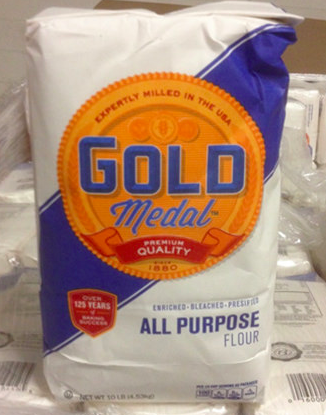General Mills Recalls Flour After Traces Of Salmonella Are Found

Most people believe that it is the eggs in raw cookie dough that are the problem. Because flour isn’t cooked, it also has the potential for the bacteria.
Kenzie Taylor
Opinions Editor
It is a common misconception that the dangers of eating raw cookie dough is blamed on raw eggs; however, there is another ingredient that also threatens illness to those who consume raw dough or batter.
General Mills recently announced a recall on Jan. 23, 2019 regarding its Unbleached All Purpose Flour. The recall only pertains to the “better if used by date” of April 20, 2020. The FDA tested the flour and discovered traces of Salmonella while sampling the product.
As a result of the newfound information, General Mills recalled the flour voluntarily, in order to reduce risk of illness.
Consumers should be cautious of flour, as it is in fact a raw product.
“If we have reason to believe due to random testing that a particular batch may have Salmonella, we will recall the product. As a leading provider of flour in the U.S. we are also taking this opportunity to remind consumers to never eat raw dough or batter, and how to safely handle flour,” General Mills spokesman Mike Siemienas said.
Salmonella is killed through heat, or cooking the product in which the flour is present in, according to the FDA. This terminates the possibility of contracting salmonella, as well as a variety of other food borne diseases. In this particular recall, there are no reports of customers contracting salmonella.
Because there is no heat treatment of flour, it is classified as a raw agricultural product that a majority of consumers aren’t aware of.
Science teacher Andy Kahler, father of two toddlers, occasionally bakes with his children and would be susceptible to the danger of raw flour; just recently he became aware that flour wasn’t a ready-to-eat product, “Occasionally my wife bakes with my children … we do let them eat the raw cookie dough, as long as there aren’t eggs in it,” Kahler said.
“I’ve gotten sick from eating raw chocolate chip cookie dough before, and I also know friends and family who have too. I’ve always thought it was because of the uncooked eggs,” junior Jane Jonassen said.
The basic milling process of wheat does include a cleaning process.
“The first milling steps involve equipment that separates grain from seeds and other grains, removes foreign materials that might have originated during the farmer’s harvest such as metal, sticks, stones and straw; and scours the kernels of wheat. It can take as many as six steps,” said the North American Millers’ Association (NAMA), which General Mills is a milling member of.
It is important to be cautious of raw doughs and batter–the eggs are dangerous raw, but so is the flour.





















































